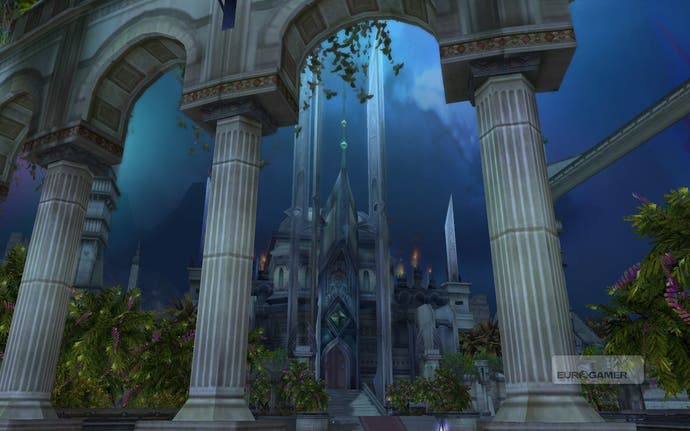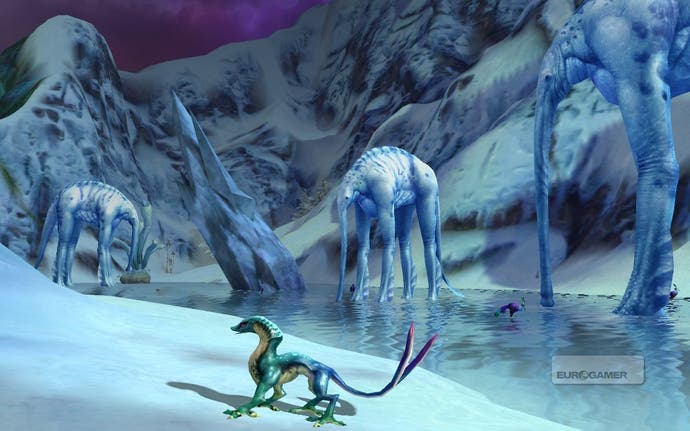Aion: The Tower of Eternity
Gliding through the beta.
The strict division of the two factions' homeworlds - separated as they are by the high-level player-versus-player zone the Abyss, and the broken Tower of Eternity - might well be Aion's most controversial design choice. This relegates all PVP action to the game's later stages, so those with a keen interest in large-scale player combat (which ought to be many, given the game's Lineage heritage, flying combat and intriguing third AI faction) are faced with a fairly solid questing grind to get to it. It also divides a substantial amount of the game's content in two, with the result that you'd need to roll at least two characters to see everything Aion has to offer. It also stands to reason that the questing and exploration on each side might be curtailed as a result.
It's true the first half of the levelling curve is quite a linear progression from one quest hub and zone to the next - but it's also a densely-packed and well-paced one. There are exactly the right amount of quests for grind-free levelling - no fewer, but not many more, either - and each NPC village and monster enclave has been frugally spun out for as much story, entertainment and all-important XP as it can yield. One excellent move is to split off the critical quests that deliver the best rewards and most satisfying story chains into a separate "campaign" category, giving you a clear idea of what's not to be missed, and what's just grist for the XP mill. The campaign quests also neatly divide the game into chapters, the first taking you up to level 10 and your ascension as a Daeva (which means a pair of wings, the power of flight, and a powerful Daeva super-skill).

There's nothing much to surprise in the quest design; this is straightforward, school-of-classic-WOW stuff. Collect the drops, kill the boss mob, sabotage the wagon. Inspiring it may not be, but the tuning is a cut above, with landscapes and enemy placement that have clearly been planned with caution and just a soupçon of sadistic pleasure. Aion is a totally solo-able game, and a scrupulously fair one, but if you want to go it alone, don't expect it to be easy. Dense enemy placement, frequent patrols, tight level banding - a monster just two levels above you is to be avoided, and fighting two of your own level is far from a cakewalk - all ensure that you'll die a few times.
Dying incurs a small experience penalty and short debuff, both of which can be eliminated with a fee. (If you're initially surprised by how much money you seem to make in Aion, don't be, because in this game you get it to spend it. Everything costs - travel, some of your better skills, crafting - and it costs a fair bit, too.) However, after level 10 you'll find yourself more concerned at the irreparable loss of Daeva Points, or DP, when you die. These build up to unlock your mouth-watering super-skills, and it takes an hour or two's faultless and uninterrupted play to get there.

Although it employs a simple combo system and some slightly advantages to positional play, combat won't convert any MMO naysayers, being a textbook skill-clicking affair at its root. It does, however, enjoy the advantages of fine animation and sound effects, very crisp timing, and clearly-defined skills with obvious and tangible effects - all areas where, for example, even a well-balanced and enjoyable game like Warhammer Online fell down at launch. This stuff couldn't be more important in a classical MMO, and it's another area where NCsoft has clearly studied long and hard.








